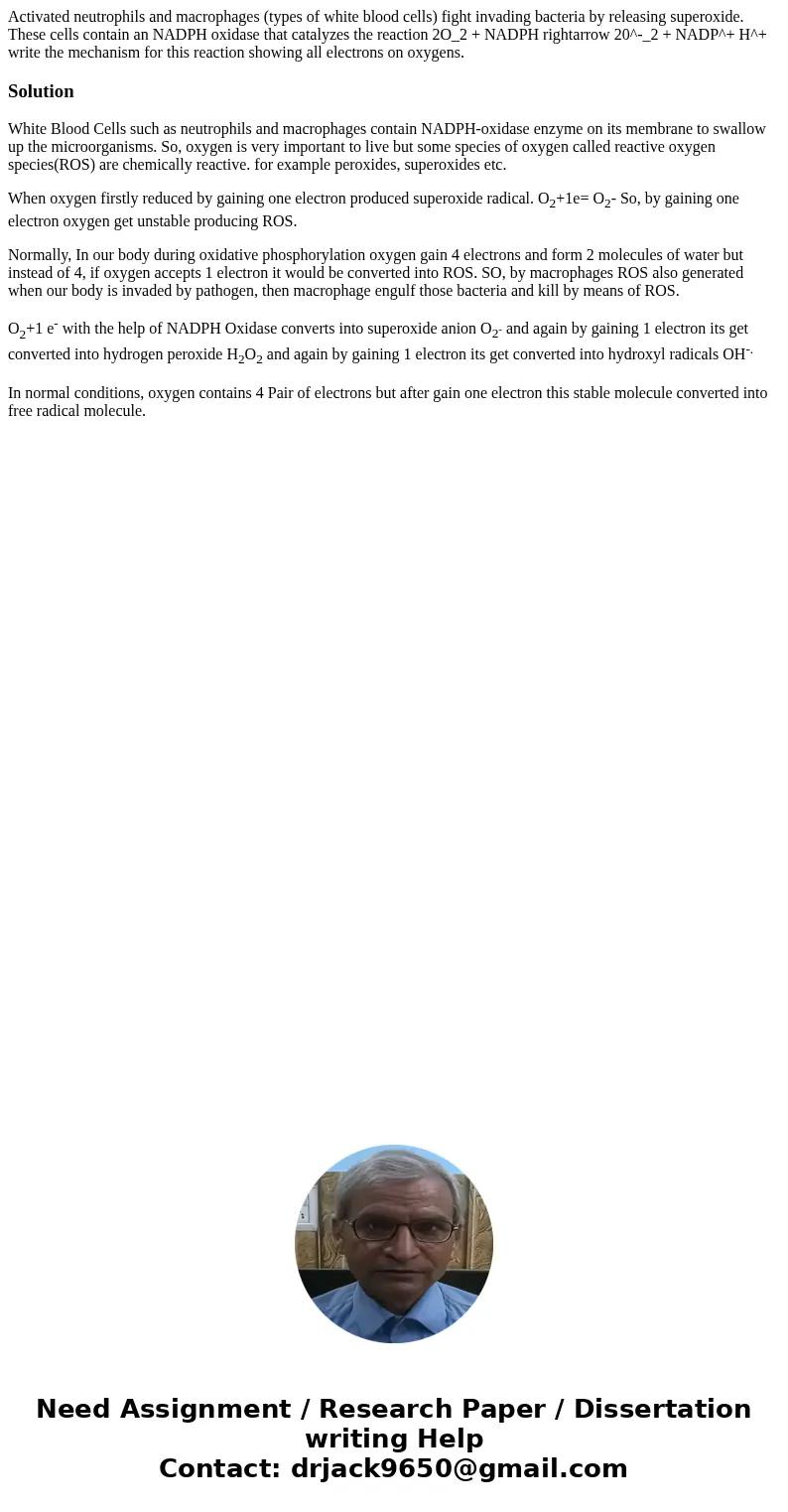Activated neutrophils and macrophages types of white blood c
Solution
White Blood Cells such as neutrophils and macrophages contain NADPH-oxidase enzyme on its membrane to swallow up the microorganisms. So, oxygen is very important to live but some species of oxygen called reactive oxygen species(ROS) are chemically reactive. for example peroxides, superoxides etc.
When oxygen firstly reduced by gaining one electron produced superoxide radical. O2+1e= O2- So, by gaining one electron oxygen get unstable producing ROS.
Normally, In our body during oxidative phosphorylation oxygen gain 4 electrons and form 2 molecules of water but instead of 4, if oxygen accepts 1 electron it would be converted into ROS. SO, by macrophages ROS also generated when our body is invaded by pathogen, then macrophage engulf those bacteria and kill by means of ROS.
O2+1 e- with the help of NADPH Oxidase converts into superoxide anion O2- and again by gaining 1 electron its get converted into hydrogen peroxide H2O2 and again by gaining 1 electron its get converted into hydroxyl radicals OH-.
In normal conditions, oxygen contains 4 Pair of electrons but after gain one electron this stable molecule converted into free radical molecule.

 Homework Sourse
Homework Sourse